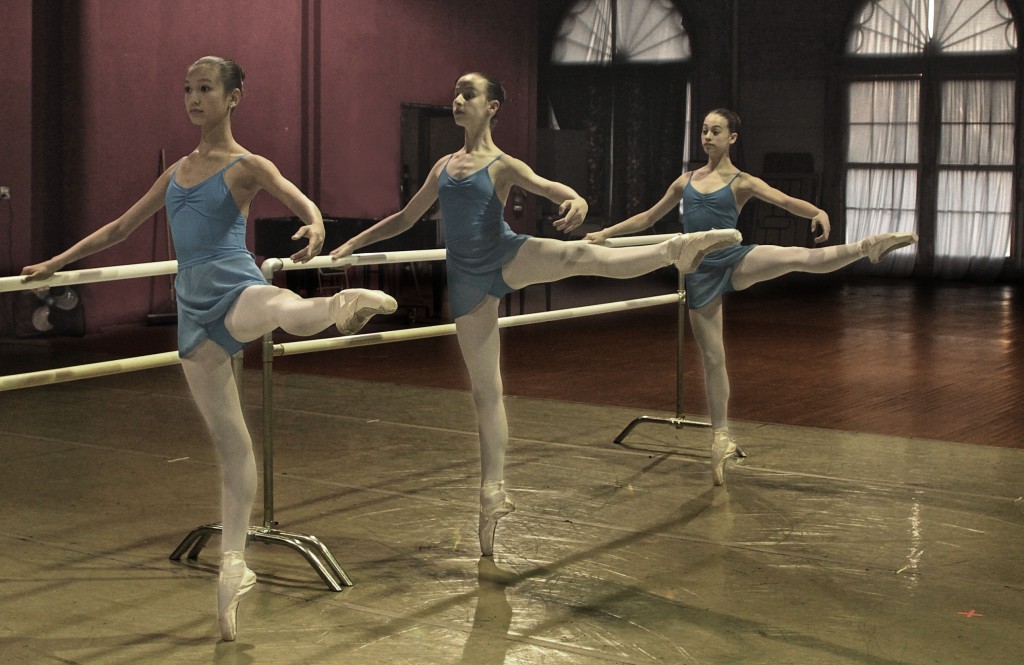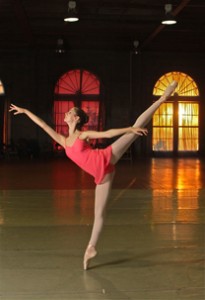
The Summer Intensive. Both exciting and a little frightening, this type of training can really be beneficial to you as a dancer. It can also be a little bit intimidating, offering a new environment, new teachers and students you may not know. For some dance students, it may also be their first time away from home.
Dalia Rawson, Principal at San Jose Ballet School has “been there, done that”. Not only has she attended summer intensives herself, but now she also hosts them at the school. Dalia was kind enough to take the time to offer 4dancers readers 5 great tips for getting the most out of a summer intensive.
Here they are:

1. Do your research.
Be sure to pick a Summer Intensive that offers what you need to get the most out of your summer of training. If you are an advanced dancer, and are looking to find an Intensive that will help you take steps towards a future as a professional dancer, you will likely want to attend a Summer Intensive at a School associated with a professional company. Some Intensives, including Ballet San Jose’s Summer Intensive, offer the chance to work with the associated company’s Artistic Leadership, providing excellent exposure to the people who will ultimately be choosing Trainees, Apprentices, and future dancers in their company.
2. Embrace classes in dance styles outside your comfort zone.
The more uncomfortable you feel in a class, the more important taking that class likely is for you. It can be hard for a bunhead who has never taken a jazz class before to be able to let go and move their pelvis, or for someone who has never tried to improvise to find the freedom to create their own movement vocabulary. But if it feels foreign and uncomfortable, take a deep breath, have a sense of humor about yourself, and give it a try!
The ability to adapt and have an open mind is critical to dancers working with new choreographers, and even if you never professionally end up having to do a musical theatre number, the ability to get over feeling uncomfortable and give it your all is a valuable skill to develop.
3. Give some thought to the challenges of living on your own that you may face for the first time if you are living in a dormitory.
My first Summer Intensive was in a humid Texas, and I learned the hard way that unlike in California, if you leave your dance clothes wet in the washing machine over night, you will end up with moldy tights! If you are staying at a dormitory, it can get tricky to be sure that you are eating enough healthy food to perform at your best. A cafeteria environment can make it hard to eat the way you should, and to get enough protein, vitamins, and healthy carbohydrates in your diet. Talk this over with your parents and your doctor before traveling away from home, and come to your summer intensive equipped with a plan to eat and stay healthy over the summer.
Have a plan for dealing with some of the other issues you may face when staying away from home for the first time. A dormitory situation at a summer intensive was where I first regularly encountered students my own age who smoked cigarettes and drank alcohol. You know that these behaviors won’t help your dancing, not to mention your health, so come up with some strategies and responses to these situations with your parents before you have to deal with them face to face. Be prepared to maintain your health and well being over the summer, so that the additional pressure of taking care of yourself on your own doesn’t take away from your ability to dance at your best.

4. Make friends with everyone!
Always smile, make eye contact, and say “Hi,” when you introduce yourself. Avoid gossip, and be a positive voice amongst the dancers in your class. Don’t join in negative talk about other students. If you see other students making someone feel left out or hurt, give them a little smile or wink to let them know that you see others’ bad behavior and don’t give any value to it. Friends you make at Summer Intensives can last a lifetime, so take the opportunity to enjoy being surrounded by young dancers who share your passion for ballet!
5. Be confident!
It is scary to make mistakes in a new studio and in a new situation, but know that if you don’t have your best class, or if you fall out of a few turns, your teachers are there to help you grow and improve, and having a good attitude when things aren’t going perfectly is much better than getting upset with yourself.
In your home studio it might be easier to bounce back from a bad class or a poorly executed combination, but in a new environment you might feel that every mistake you make can be an indelible black mark on your reputation. Remember that everyone makes mistakes. Take all corrections, given to everyone in the class, not just you, as an opportunity to show how well you take correction, and your willingness to learn and grow as a dancer.
Principal of Ballet San Jose School and the Artistic Director of The Rawson Project Contemporary Ballet, Contributor Contributor Dalia Rawson was recently awarded a Fellowship by the New York Choreographic Institute. She founded The Rawson Project in 2010 in order to support the creation of new works that fuse classical ballet technique with a contemporary aesthetic.
As a dancer, Rawson performed a wide variety of leading roles with Ballet San Jose, (formerly Cleveland Ballet), from 1991 through 2006. Rawson’s choreography has been performed both by Ballet San Jose and the Ballet SJ School, and for her own company she has created a repertory of award-winning ballets that showcase the virtuosity, expressive range, and extreme lines of classically trained dancers in edgy and original dances.





Great tips, will be following them. Thank you for a good article.
Thanks for the comment–it is appreciated.
I know Dalia Rawson personaly. She is a very dedicated woman. Enjoyed this article. Thank you.